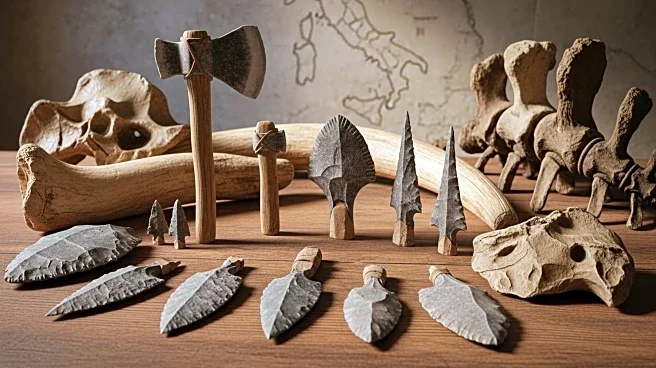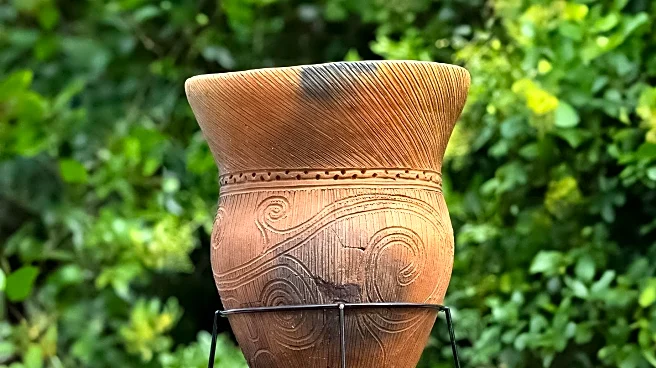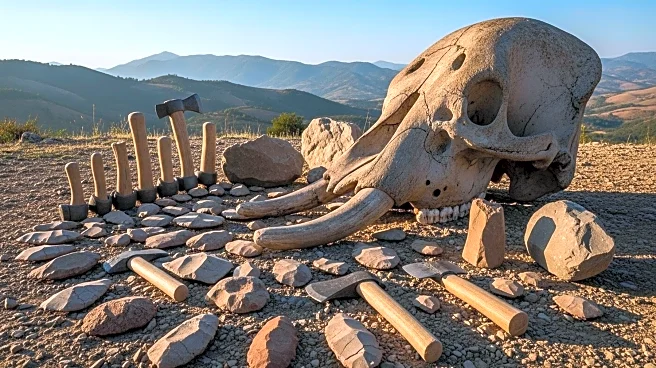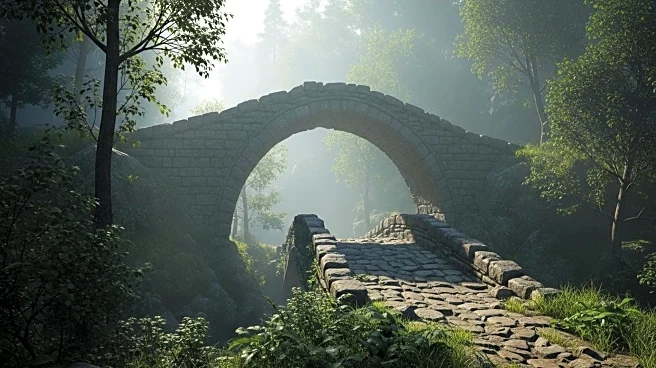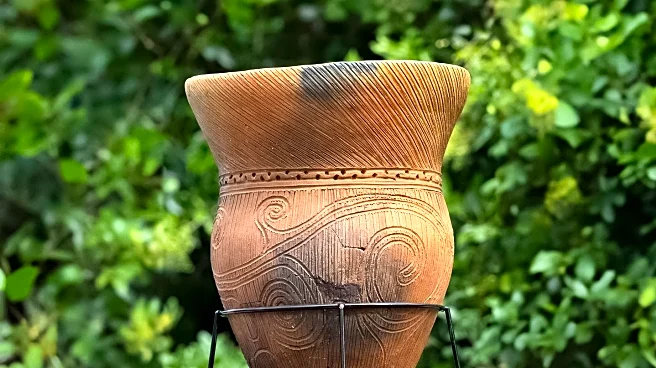What is the story about?
What's Happening?
Researchers in Italy have uncovered evidence that early humans, approximately 400,000 years ago, butchered elephants for food and crafted tools from their bones. This discovery was made at the Casal Lumbroso site in northwest Rome, where over 300 skeletal fragments of a straight-tusked elephant, Palaeoloxodon, were found alongside more than 500 stone tools. The study, led by Beniamino Mecozzi of Sapienza University of Rome, indicates that these ancient humans utilized the elephant not only for sustenance but also transformed its bones into tools. The absence of visible cut marks on the bones suggests that smaller tools were used to process soft tissue, while some bones were reshaped into larger tools. This pattern of behavior aligns with other sites in central Italy, highlighting a recurring practice among ancient hominins during the Middle Pleistocene Epoch.
Why It's Important?
The findings provide significant insights into the resourcefulness and adaptability of early humans in Europe. By exploiting elephants for both food and toolmaking, these ancient populations demonstrated advanced survival strategies during a notably warm phase of the Middle Pleistocene. This research enriches our understanding of human evolution and the development of toolmaking skills, which are crucial for survival and technological advancement. The study also underscores the importance of central Italy as a key region for understanding early European human activities, offering a glimpse into the interactions between humans, animals, and ecosystems in prehistoric times.
What's Next?
Further research may focus on exploring other archaeological sites in Italy and Europe to uncover more evidence of similar practices. This could lead to a deeper understanding of the migration patterns and technological advancements of early humans. Additionally, the study may inspire new methodologies in archaeological research, emphasizing the importance of examining both animal remains and associated tools to reconstruct ancient human behaviors.
Beyond the Headlines
The ethical and cultural dimensions of this discovery highlight the complex relationship between humans and their environment. Understanding how ancient humans interacted with their surroundings can inform current discussions on sustainability and resource management. The study also raises questions about the evolution of human intelligence and the development of complex societies.
AI Generated Content
Do you find this article useful?
